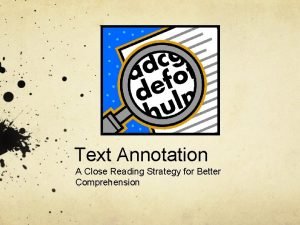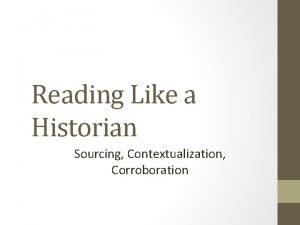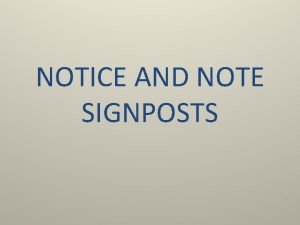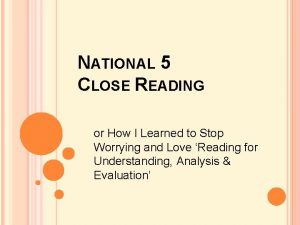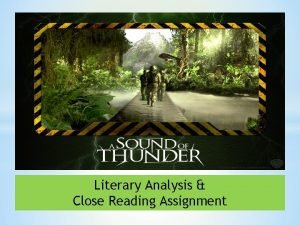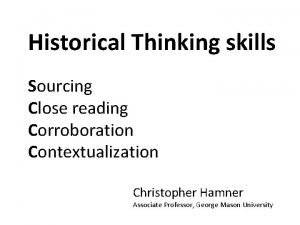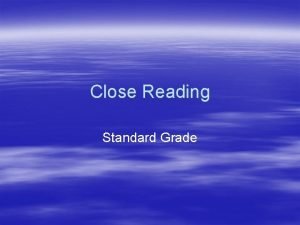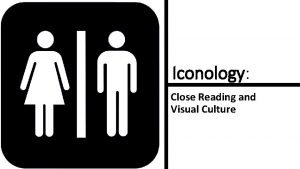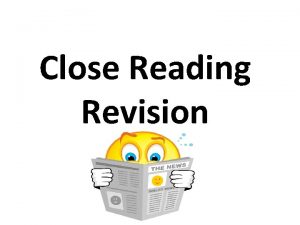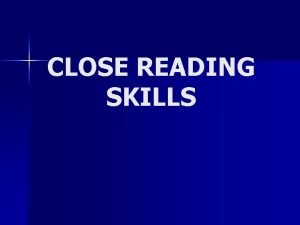CLOSE READING A REVIEW CLOSE READING A REVIEW







- Slides: 7

CLOSE READING A REVIEW

CLOSE READING: A REVIEW • We close read a passage to gain a better understanding of what we read. • We determine the author’s purpose for reading. • We determine why the author chose to write in a certain style. • We annotate to pull out relevant information and evidence and to understand unfamiliar words. • We have learned a step-by-step approach to close reading.

CLOSE READING: THE STEPS 1. Use my pre-reading strategies. – Read the title and any subtitles. – Look at pictures, captions, information boxes. – Look for italicized, bold-faced, or repeated words. – Jump ahead and take a quick look at the questions or prompts that follow the passage. – Do a quick read to get the gist of the passage.

CLOSE READING: THE STEPS 2. Read the passage from start to finish. –Don’t annotate yet, just read.

CLOSE READING: THE STEPS 3. Chunk your passage. –Number your paragraphs or break up into more manageable sections of text. –Do what works best for you.

CLOSE READING: THE STEPS 4. Re-read questions that follow your passage. Reread the prompt.

CLOSE READING: THE STEPS 5. Annotate each section. – Annotations: notes on a text – Remember the three basic annotations: • Underline main ideas of each section. • Circle unfamiliar words. Use word parts (prefixes, suffixes, and roots) and/or context clues to find the meaning of the words you circle. Write your meaning in the margin and circle it. • Take notes in the margins on key details. Remember to note the information (EVIDENCE!) that will help you answer questions or respond to a writing prompt.


